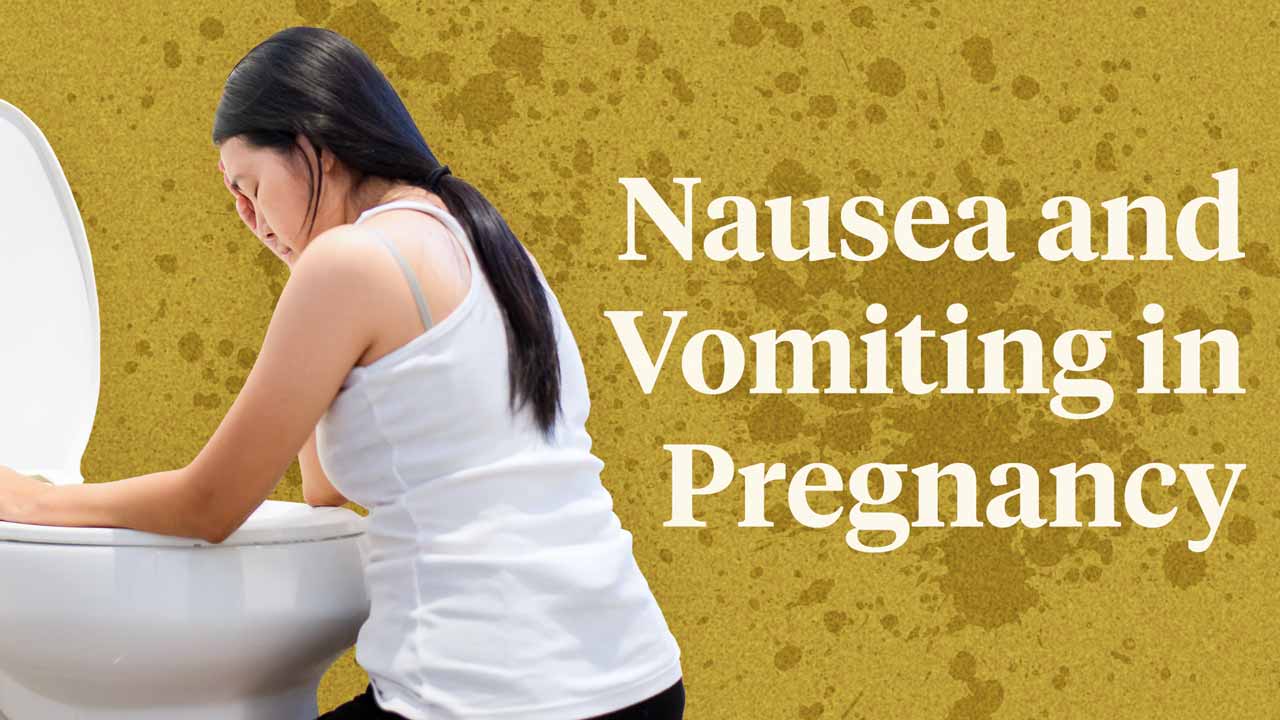Between half and two-thirds of people experience feelings of malaise - specifically nausea and vomiting - during pregnancy (Better Health Channel 2022).
The colloquial term ‘morning sickness’ is considered to be an inaccurate name for these symptoms, as a person may feel ill at any point during the day (or night) and symptoms are not exclusive to the hours of the morning (Healthdirect 2023). Therefore, the preferred term is nausea and vomiting in pregnancy (NVP).
NVP typically affects people during the first trimester. However, some people will experience these symptoms all the way up until delivery (Smith et al. 2024; Healthdirect 2023).
The exact cause of NVP is still not well understood (Healthdirect 2023).

What is the consequence of this?
There are many reported cases of doctors, midwives, pharmacists and other health professionals dismissing claims of severe morning sickness, contributing to the stigmatisation of NVP as ‘purely psychosomatic’ or something that those who are pregnant exaggerate or make up (Taylor 2019; Better Health Channel 2022).
This contradicts the prevalence of NVP, which is estimated to affect between half and two-thirds of people during pregnancy (Better Health Channel 2022). NVP ranges from mild nausea and vomiting to pathologic hyperemesis gravidarum (Healthdirect 2023).
Hyperemesis Gravidarum
Severe NVP, known as hyperemesis gravidarum (HG), affects one in 100 people during pregnancy (NSW Health 2024).
While there is no specific definition for HG, it typically refers to vomiting during pregnancy so intense that it results in weight loss, volume depletion and ketonuria and/or ketonaemia (Jennings & Mahdy 2023).
Treatment for HG usually requires hospital admission, along with intravenous fluids and nutrition (Better Health Channel 2022).
Causes of Nausea and Vomiting in Pregnancy
While the exact cause of NVP is unknown, it is believed to be associated with pregnancy-related hormonal changes (Healthdirect 2023).
Risk Factors for Nausea and Vomiting in Pregnancy
- Being pregnant for the first time
- Obesity
- Stress
- History of NVP in a previous pregnancy
- Multiple pregnancy
- History of nausea and vomiting when taking oestrogen (e.g. contraceptive pill)
- History of migraine
- History of motion sickness
- Family history of NVP
- History of gastrointestinal issues such as reflux or ulcers
- Molar pregnancy.
(Smith et al. 2024; NHS 2024)

Symptoms of Nausea and Vomiting in Pregnancy
Primary symptoms of NVP include:
- Nausea
- Vomiting
- Loss of appetite
- Psychological complications (e.g. depression or anxiety).
(Better Health Channel 2022)
Impacts of Nausea and Vomiting in Pregnancy on the Fetus
A person who is pregnant may be concerned that frequent vomiting could pose a health risk to their baby - however, this is an unfounded fear. In fact, the opposite appears to be true: studies suggest that mild to moderate morning sickness is linked to a reduced risk of miscarriage (Better Health Channel 2022).
This aside, prolonged periods of vomiting that cause dehydration and weight loss could deprive the baby of adequate nutrition, increasing the risk of the baby being born underweight (Better Health Channel 2022).
Managing Nausea and Vomiting in Pregnancy
Dietary Modifications
- Eat smaller amounts of food more often
- Eat bland foods that are low in fat
- Avoid spicy foods
- Eat foods high in protein
- Don’t skip meals
- Avoid cooking or being in the kitchen when food is being prepared if this triggers nausea
- Eat a few dry crackers or biscuits prior to getting out of bed
- Ginger (in any form) is widely suggested to aid NVP symptoms
- Aim to drink eight glasses of water per day
- Carbonated drinks or ginger/peppermint tea may relieve symptoms.
(Healthdirect 2023; NHS 2024)

Other Management Strategies
- Antiemetic medications
- Getting adequate rest
- Deep breathing and relaxation techniques
- Anti-nausea wristbands
- Acupuncture/acupressure.
(Healthdirect 2023; NHS 2024)
Conclusion
Nausea and vomiting in pregnancy is a common condition and may even be an indicator of a healthy pregnancy. It is, however, debilitating for some people and should not be underestimated in its severity.
For some, NVP causes a significant reduction in quality of life. While it can often be managed through diet and lifestyle changes, further intervention may be necessary in severe cases.
Test Your Knowledge
Question 1 of 3
Which one of the following is NOT a risk factor for NVP?
Topics
References
- Better Health Channel 2022, Pregnancy - Morning Sickness, Victoria State Government, viewed 8 November 2022, https://www.betterhealth.vic.gov.au/health/healthyliving/pregnancy-morning-sickness
- Healthdirect 2023, Morning Sickness, Australian Government, viewed 6 November 2024, https://www.healthdirect.gov.au/morning-sickness
- Jennings, LK & Mahdy, H 2023, ‘Hyperemesis Gravidarum’, StatPearls, viewed 6 November 2024, https://www.ncbi.nlm.nih.gov/books/NBK532917/
- National Health Service 2024, Vomiting and Morning Sickness, NHS, viewed 6 November 2024, https://www.nhs.uk/pregnancy/related-conditions/common-symptoms/vomiting-and-morning-sickness/
- NSW Health 2024, Hyperemesis Gravidarum, New South Wales Government, viewed 6 November 2024, https://www.health.nsw.gov.au/kidsfamilies/MCFhealth/Pages/hyperemesis-gravidarum.aspx
- Smith, JA, Fox, KA & Clark, SM 2024, Patient Education: Nausea and Vomiting of Pregnancy (Beyond the Basics), UpToDate, viewed 6 November 2024, https://www.uptodate.com/contents/nausea-and-vomiting-of-pregnancy-beyond-the-basics
- Taylor, T 2019, ‘Women 'Told it's in Their Head': New Guidelines Tackle Misconceptions Around Morning Sickness’, ABC News, 21 October, viewed 6 November 2024, https://www.abc.net.au/news/health/2019-10-21/nausea-vomiting-pregnant-morning-sickness-hyperemesis-gravidarum/11603824

